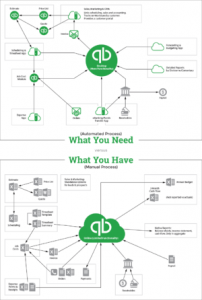Do It Right The First Time (DIRTFT, pronounced “Dirtfoot”) is a variation of “a stitch in time saves nine”.
Nonetheless, it is honoured more in the breach than the observance –we never seem to have time to do things right, which means we often have to find a lot more time to do things over.
A good rule of thumb is that a mistake costs you at least three times as much as doing it right:
- the time you spent doing it wrong,
- the time you spent re-doing it,
- and the opportunity cost of the time you could have been spending on something else.
This is “at least”, because you need to consider the knock-on costs of the mistake, and the additional costs to fix it.
We worked with an $8M revenue company which was issuing 1,600 credit notes per year – more than 6 per day – because of errors in its (manual) invoicing processes. The costs to “do” (issue the invoice), and the costs and opportunity costs of the “re-do” (issue the credit note) weren’t that large. But the knock-on effect was substantial. The company’s larger clients would wait until day 28 to review the invoices, and would request a new invoice if there was an error. In effect, the company was granting 60 days (or more) credit to its customers.
The first step to fix the problem was to create a detailed two-column checklist that followed the existing process, with one column for the preparer and one for a colleague to initial as a signoff. Any invoice that was signed off by both employees was sent to the client; any invoices which failed a step were set aside for further review.
After the checklist – still a manual process – error rates plummeted and cash flow improved. Rework also plummeted, giving staff and management time to work on automating both invoicing and then the estimating. An added benefit was that any mistakes could be pinpointed and tracked – not to criticise the employees, but rather to feed back to further improve the process. As a direct result, we found and fixed some upstream errors originating in the quoting and estimating process.
Profit Breakthrough:
Keep It Simple. Look at your processes for Efficiency and Effectiveness. First, cut out the number of steps (the Method). A checklist is a great place to start. Next, consider automating what’s left (the Tools). Automating a mistake prone process only increases the number of errors.
Consider the 80-20 Rule. Automating the routine gives you more time to focus on the value-add.
Your new process should Do It Right The First Time; it will save you three times as much effort, to say nothing of the knock-on costs.
Approach the design and the implementation as a whole, but try to do both in bite-sized chunks.

